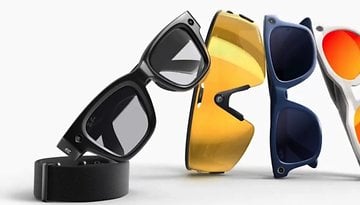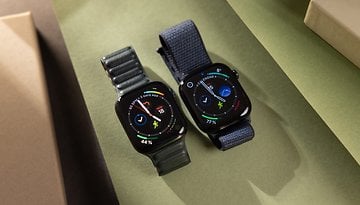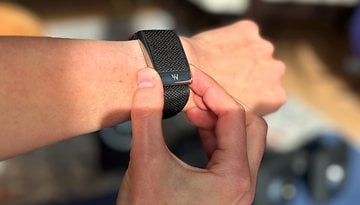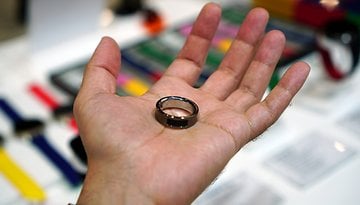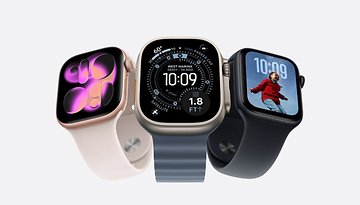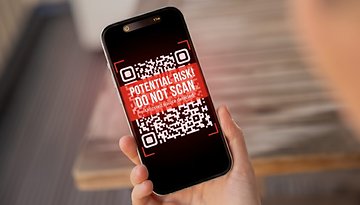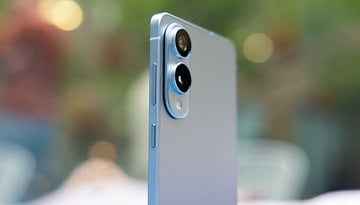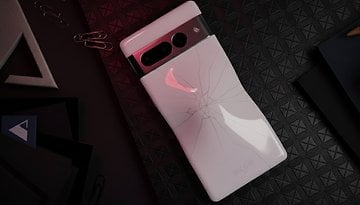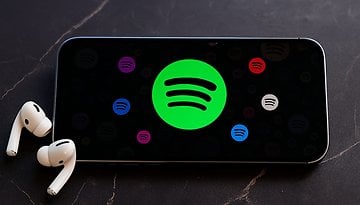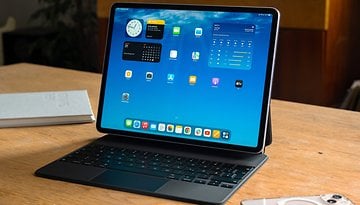Ultrahuman M1 review: My two weeks as a cyborg
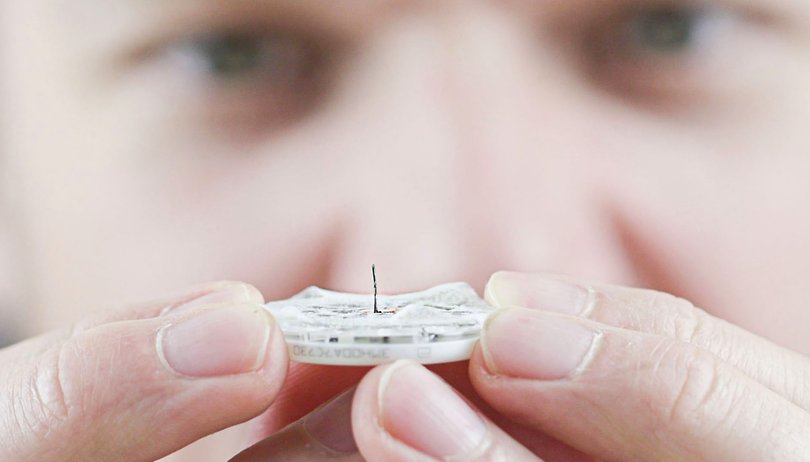

Are blood glucose monitors the next big thing for fitness enthusiasts? Ultrahuman sells invasive sensors that can be inserted into the arm of customers, where it will continuously monitor glucose readings via a sophisticated app. The result is live tips and recommendations on how to optimize one's lifestyle, including an extensive content ecosystem that concerns metabolic fitness. We reviewed the Ultrahuman M1 for two weeks and would like to share how our lives have changed since then.
In April this year, a press release like many others landed in my inbox: Indian startup Ultrahuman is buying wearable manufacturer LazyCo. I have never heard of either. However, it was the addition in the title "Metabolic Fitness Platform" that piqued my interest.
By tracking blood sugar levels, the vendor promised unprecedented insights into one's metabolism that range from diet to sleep to exercise. After a video call with Ultrahuman CEO Mohit Kumar, I was convinced: I wanted to try this out. A little over a month later, I was standing in the NextPit office, feeling somewhat jitterish with a dangerous-looking sensor applicator in hand.
Setup: A needle in my arm?
For the glucose sensor, Ultrahuman relies on Abbott's Freestyle Libre 2, which has been available since 2019. Many diabetes patients also wear it to monitor their blood glucose levels. The technology is proven, so there is nothing to worry about, right? However, the thought of having a thin, flexible filament in the skin makes me feel uncomfortable. During an operation, I am more afraid of having my arm pricked than of the general anesthesia and the operation itself. Needless to say, my feelings before the cyborg experiment were ambivalent, especially since I had already looked at too many pictures of the sensor. Whether that is fortunate or otherwise, I leave it to you.
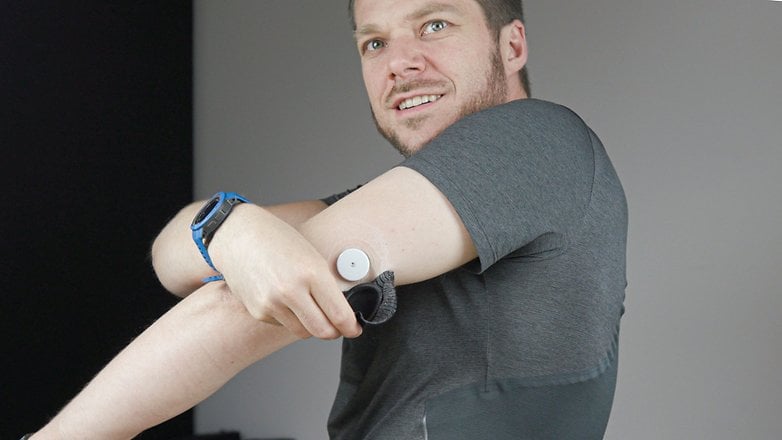
So then I gathered my courage, placed the sensor in the applicator and punched the chip into my arm. What did I feel? Nothing at all! For the first two days, I carried with me a certain uneasiness about the needle getting stuck somewhere, especially at night. In everyday life, however, I did not notice the 0.4 millimeter thin filament in my skin, neither during sporting activities nor when sleeping. Only once did I get stuck while I was on the sofa and experienced a slight insect bite sensation for a few hours. All in all, my fear was unfounded, and Ultrahuman also supplies tough protective plasters to keep the sensor safe.
The initial pairing of sensor and app was performed by tapping my new sticker with the smartphone. However, the app kept me in suspense for another two hours until the sensor was fully calibrated, and warned me that the readings could be inaccurate for the first 24 hours. During the entire review period, I had no problems with the connection between the sensor and smartphone.
Nutrition as a cyborg
At long last, my first meal as a cyborg? Sushi! Light Japanese fare that consists of rice and fish? No way! The white rice makes my blood sugar shoot up. While I was still eating, the app asks me via a push notification: "What are you eating right now?" and sent a push notification minutes later: "Glucose spike detected!". Fascinated, I watched my blood glucose level go from the lower edge of the target range at 70 mg/dL to the upper limit of 110 mg/dL within a few minutes. Shortly thereafter, my body reacted, and my blood sugar dropped rapidly to 90 mg/dL. The first spike was followed by the first crash, and I had a craving for something sweet. Some cream cheese with peach brought my blood sugar back up to the upper limit. Delicious, but this up and down rollercoaster ride is not necessarily healthy.
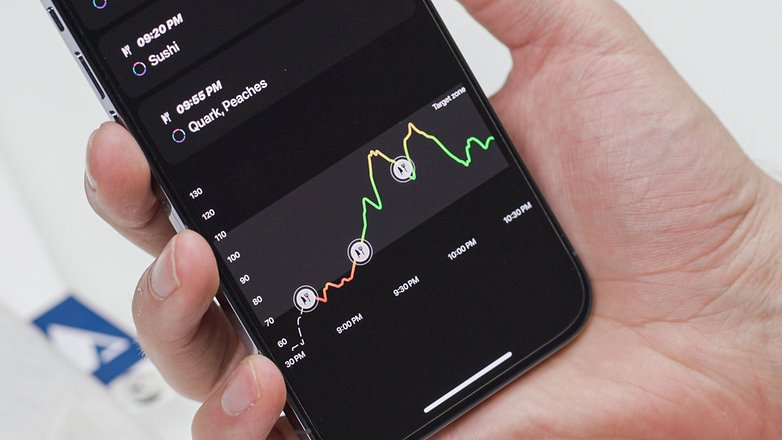
I felt like I'm in a chemistry lab, except I'm dumping sushi and peach into my body instead of citric acid and sodium carbonate as into the indicator solution. And therein lies my Eureka moment: you can explain this to any child (and any adult for that matter) what different foods do to the body. Sure, fast carbs are evil because blood sugar shoots up and that does all kinds of damage. However, until you see the effect with your own eyes, the learning effect is as lasting as a theoretical lesson about phenolphthalein to ten-year-olds.
With Ultrahuman, it's not so easy to cheat the calorie counter app with a chocolate bar in between meals. Virtually any food with appreciable amounts of sugar, even a handful of grapes or two figs, would prompt a push notification from the Ultrahuman app: "Your blood sugar is rising right now. What did you eat?"
Each food tracked in the app now gets a rating based on the body's blood sugar response. From this, the app then generates the best food lists for you with your personal top lists of best and worst foods. The exciting thing here is that every body reacts differently to different types of foods. What is healthy for one person may cause blood sugar spikes and crashes in another. After two weeks, I've definitely learned an enormous amount about how my body reacts to different food types.
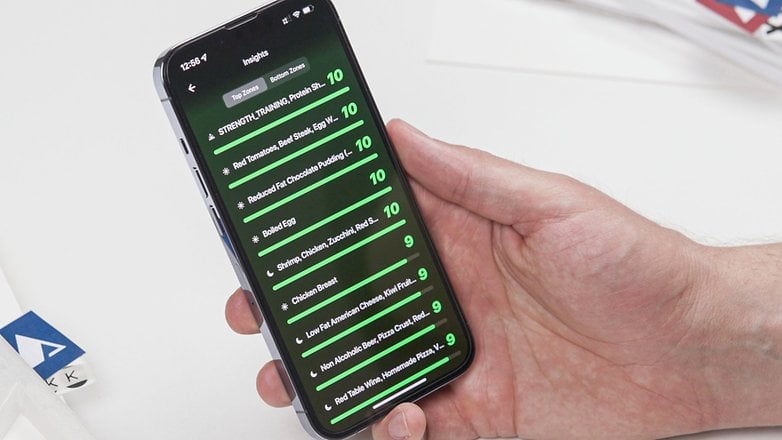
By the way, throughout the review duration, nutrition tracking via the app still took some getting used to. Since a few days, however, it also works via MyFitnessPal. However, you'll need the Pro version to be able to track the meals to the minute and synchronize them with the blood glucose curves.
Sporting activities as a cyborg
The second major aspect of the Ultrahuman app is sports. This begins by tracking your blood glucose level during training and extending it to numerous video workouts that the app presents to you depending on your preset training goals. You can choose to track the workouts directly in the Ultrahuman app or simply import them automatically via one of the following services:
- Apple Health
- Google Fit
- Garmin
- Fitbit
- Polar
- Oura
- Suunto
- Wahoo
- Zwift
- Training Peaks
In the review, this worked perfectly with the Garmin Fenix 7—and the imported data from Apple Health also worked without any issues. The tracked workouts showed up in the Ultrahuman app a few minutes later, including a blood glucose assessment. Of course, it is important that your body has enough energy available during exercise. The needs are different, of course, depending on whether you are training small muscle groups such as the arms with weights or running a marathon.
For example, there is praise for a workout-induced glucose spike, which indicates that the body itself produces glucose. As with other events, the Ultrahuman app offers detailed explanations of the causes and positive effects in this so-called gluconeogenesis process.
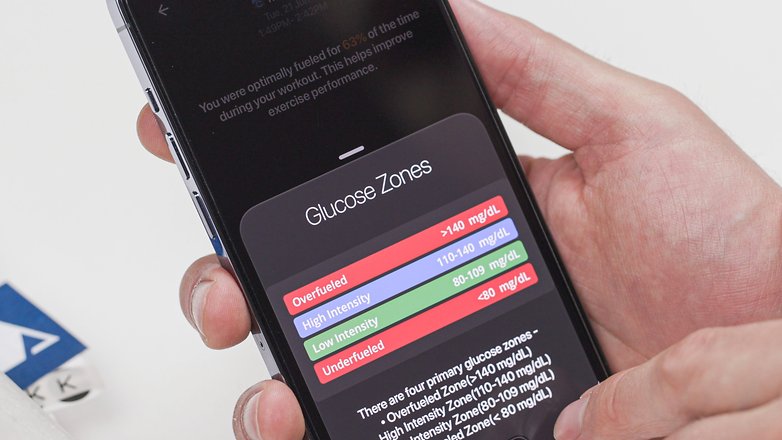
In contrast, I earned some criticism from the Ultrahuman app when it comes to blood sugar dips during training. One example of this was a run during lunch break, done on a largely empty stomach. The breakfast of one pear and two peaches was not exactly sumptuous, but the high sugar content also caused a strong blood sugar spike followed by a slump about two hours before the run. I felt rather weak towards the end of the run and after that.
Of course: All this information can also be derived logically and observed without a glucose tracker on the arm. But it is simply much more convenient and easier to follow, especially since the app provides really impressive analyses and very detailed background information.
Metabolic Score and Metabolic Vectors
Based on the measured values and the tracked activities and diet, the Ultrahuman app determines a score between 1 and 100 for each day. Of course, the important thing here is how much of the day you spend in the ideal blood glucose range between 70 and 110 mg/dL. But it's also important to avoid spikes and dips in the level—a gradual up and down gradient is ideal.
How this can be achieved? All of it is explained by the app continuously during use with new, constant recommendations. In the event of a spike, for example, the app recommends you go for a walk after a meal or have a spoonful of apple cider vinegar beforehand. Interestingly, both have a noticeable effect on my blood sugar level. And the difference between fast and slow eating is also stark. Mom was actually right about "chewing slowly"!
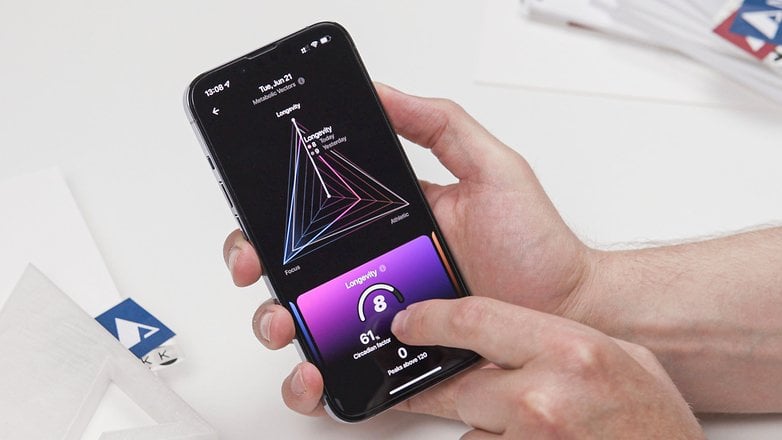
In addition to the daily score, you'll also find metabolic vectors in the app. This is a visualization of how well you are doing across the three segments of focus, longevity, and athleticism. The fewer blood sugar spikes and dips, the better your focus. The fewer peaks and the more time with optimal blood sugar levels, the longer your longevity. And clearly, regular activity with ideal blood sugar levels is good for your athletic score.
You'll also get an estimate for your daily HbA1c level, which provides clues as to whether you have prediabetes or even diabetes, or whether everything is on track. In addition to daily assessments, the app also offers long-term averages and summarizes how well your metabolic fitness is doing.
Conclusion: Two weeks as a cyborg
After exactly two weeks, the sensor stopped working as scheduled and no longer provided any results. This shelf life is limited for hygienic reasons, and I feel like I've been robbed of a sense. For two weeks, my body was a laboratory, and the results spurred me to be more disciplined about exercise and especially diet, more so than I've experienced when wearing other fitness tracker prior.
For me, Ultrahuman M1 has been one of the most exciting gadgets of the past 15 years, and I'm really excited to see how blood glucose sensors will enter the mainstream and improve our nutrition and fitness in the coming years. At the latest, when blood glucose measurement works with sufficient optical precision and thus becomes a bit more suitable for the masses, the usefulness of fitness wearables will make a giant leap forward.
Unfortunately, Ultrahuman M1 is currently only available for customers in India. A launch in the UAE is planned soon. However, Ultrahuman also has plans to expand its service to other countries and regions. And then, of course, there's the Ultrahuman Ring, which the startup unveiled a few weeks ago and is already selling it worldwide. In the longer term, the wearable for the finger is intended to be a perfect complement to the blood glucose sensor on the upper arm.






